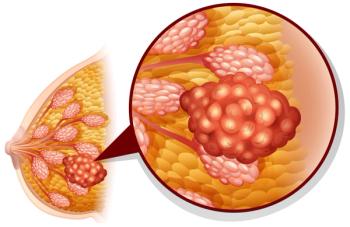
Oncology NEWS International
- Oncology NEWS International Vol 4 No 10
- Volume 4
- Issue 10
No Increased Ovarian, Endometrial Cancer Risk With Short-Term Tamoxifen Therapy
SEATTLE-A group of breast cancer patients treated with tamoxifen (Nolvadex) outside of clinical trials had up to a 60% reduction in their risk of developing cancer in the contralateral breast and no increased risk of ovarian or endometrial cancer, report Linda S. Cook, PhD, and her colleagues at the Fred Hutchinson Cancer Research Center.
SEATTLE-A group of breast cancer patients treated with tamoxifen(Nolvadex) outside of clinical trials had up to a 60% reductionin their risk of developing cancer in the contralateral breastand no increased risk of ovarian or endometrial cancer, reportLinda S. Cook, PhD, and her colleagues at the Fred HutchinsonCancer Research Center.
The study provides reassurance about the safety of short-termtamoxifen therapy in conventional medical practice, but sincethe average duration of tamoxifen treatment was less than 2 yearsin this group, the results shed no light on possible adverse effectsfrom long-term use.
The Seattle researchers used cancer registry and medical recorddata to identify a cohort of 12,598 women in western Washingtonstate under age 85 who were diagnosed with primary breast cancerbetween 1978 and 1990. Of these, 39 women developed ovarian cancer,42 endometrial cancer, and 234 contralateral breast cancer priorto 1992.
The case subjects who had developed the second primary cancerswere matched by age, disease stage, and year of initial breastcancer diagnosis with control subjects drawn from the same cohort.
The percentage of women who had received tamoxifen was 10% and18%, respectively, among contralateral breast cancer subjectsand controls; 18% and 20%, respectively, among ovarian cancersubjects and controls; and 26% and 31%, respectively, among endometrialcancer subjects and controls (J Natl Cancer Inst 87:1359-1364,1995).
The overall reduction in risk for contralateral breast cancerwith any use of tamoxifen was 50%, with reductions of 60% seenfor women who used the agent for more than 1 year and for thosewho continued therapy through the end of study follow-up or stoppedtherapy less than 1 year before the end of follow-up.
Risk reductions were larger in post-menopausal than in premenopausalwomen, although the data suggest that tamoxifen use of more than1 year's duration reduces the risk in premenopausal women as well.
Articles in this issue
about 30 years ago
New Markers May Help Predict Course of Prostate Carcinomaabout 30 years ago
Needle Exchange Programs Lower HIV Risk: Panelabout 30 years ago
Computerized Database Could Lead to Improved Staging of Lung Cancerabout 30 years ago
Centocor Wellness Program Includes Mobile Mammography Vanabout 30 years ago
Institute of the Future Urges US to Increase Spending on Basic R&Dabout 30 years ago
Yeast-Derived GM-CSF (Leukine) Cleared for Use in Older AML Patientsabout 30 years ago
Spiral CT Offers Better Detection of Disease, More Accurate Stagingabout 30 years ago
New Colon Ca Agent Is Available in FranceNewsletter
Stay up to date on recent advances in the multidisciplinary approach to cancer.



















































































